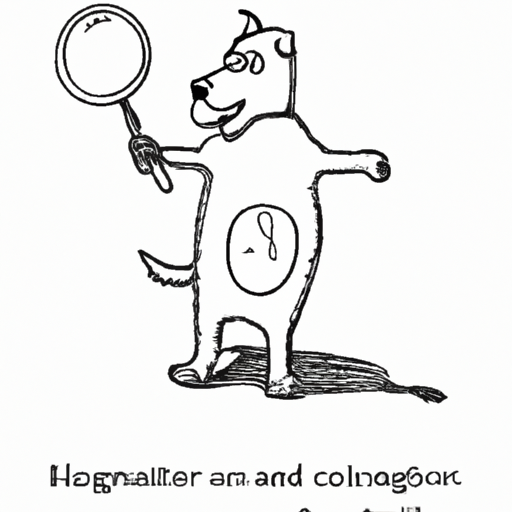As a caregiver, understanding your dog’s anatomy is crucial to ensure their health and wellbeing. One organ that you might be curious about is the stomach. Knowing its location can help you comprehend why your dog behaves the way it does when it’s hungry or when it has eaten something it shouldn’t have. In this article, we’ll explore the location of the dog’s stomach and delve deeper into its functions, potential problems, and how to maintain its health.
H2: Understanding the Anatomy of a Dog
You might be surprised to learn that a dog’s anatomy is not so different from ours. Just like us, their stomach is located on the left side of their body, nestled between the esophagus and small intestine.
To illustrate, here’s a simplified table of a dog’s digestive system:
| Organ | Location |
|---|---|
| Esophagus | Extends down the neck, through the chest, and into the stomach |
| Stomach | Located on the left side, just behind the ribs |
| Small Intestine | Begins at the stomach’s lower right and coils around the middle of the abdomen |
| Large Intestine | Sits to the right side, starting at the end of the small intestine and ending at the rectum |
H2: The Role of the Stomach in Digestion
The stomach plays a pivotal role in your dog’s digestion. When your dog eats, food travels down the esophagus and lands in the stomach. Here, it’s mixed with stomach acids and digestive enzymes to break it down into a substance called chyme.
This process is essential for your dog’s body to extract necessary nutrients from the food they eat. From the stomach, the chyme is slowly released into the small intestine, where further digestion and nutrient absorption occur.
H2: Common Stomach Issues in Dogs
Just like humans, dogs can suffer from a variety of stomach-related issues. These can range from minor discomforts like indigestion to more serious conditions such as Gastric Dilatation Volvulus (GDV), also known as bloating.
- Gastric Dilatation Volvulus (GDV): This condition occurs when the dog’s stomach twists, preventing gas from escaping. GDV is a life-threatening condition that requires immediate medical attention.
- Gastritis: This involves inflammation of the stomach lining and can result from eating spoilt food, ingesting foreign objects, or due to some medications.
- Stomach ulcers: These painful sores in the stomach lining can be caused by certain medications, diseases, or tumors.
H2: Promoting a Healthy Stomach in Your Dog
As a caregiver, keeping your dog’s stomach healthy is a top priority. Here are some tips to help maintain your dog’s digestive health:
- Feed your dog a balanced diet.
- Avoid feeding your dog human food, especially items that are toxic to them like chocolate, grapes, and onions.
- Ensure your dog has regular exercise to promote healthy digestion.
- Keep your dog hydrated. Always provide fresh water.
- Regular vet check-ups are essential to catch potential problems early.
H2: Frequently Asked Questions
1. Where exactly is a dog’s stomach located?
The stomach is located on the left side of a dog’s body, just behind the ribs.
2. What are the signs of stomach discomfort in dogs?
Signs may include loss of appetite, vomiting, diarrhea, and lethargy. If you notice any of these symptoms, it’s best to seek veterinary advice immediately.
3. How can I prevent stomach issues in my dog?
Regular exercise, a balanced diet, plenty of water, and regular vet check-ups can all contribute to a healthy stomach.
4. What should I do if I suspect my dog has eaten something harmful?
If you suspect your dog has ingested something harmful, contact your vet immediately. They will be able to provide advice based on the specific situation.
5. Are certain breeds more prone to stomach issues?
While any dog can experience stomach issues, some breeds like Great Danes, German Shepherds, and Boxers are more prone to conditions like GDV.
In conclusion, understanding your dog’s anatomy, particularly the stomach, is an essential part of caregiving. By knowing its location, function, and potential issues, you can effectively monitor your dog’s health and take swift action when necessary.



